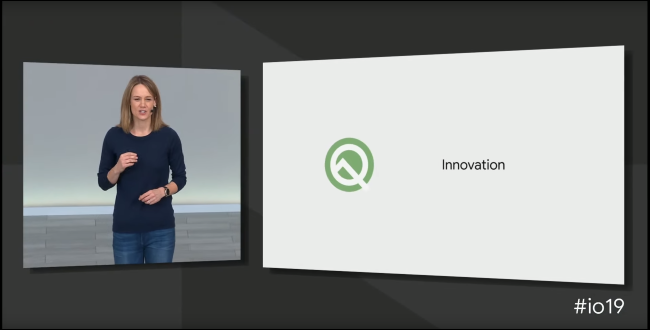Quick Links
Google's Project Mainline, announced at I/O 2019, will deliver security updates to Android devices through the Play Store. Google is bypassing the traditional, slower update channels dependent on device manufacturers and carriers. Here's what this means for you.
Before we can look at what Project Mainline means for the future, however, it's probably best to consider Android's troubled past when it comes to updates.
Android "Fragmentation" Has Long Been an Issue
You can hardly hear anything about Android without the word "fragmentation" coming up. Basically, this refers to the fact that different Android devices are all running different versions of the operating system. This is, of course, in contrast to iPhones, which are all running the same operating system (all devices that support iOS 12 are running iOS 12, for example).
It's a problem that has plagued Android almost since Android began---even now, I have four different Android devices at arm's length, and all four are running different versions. Google has done a lot to try combat this issue in the past, but nothing has seemed to really pan out. While full Android OS updates are still going to be something that will take a lot of work, Project Mainline is going to combat what's arguably more important: security updates.
The Android Update Alliance Failed
In an initial attempt to combat fragmentation, the Android Update Alliance was announced at Google I/O 2011. The goal was a noble one: to work with carriers and manufacturers to provide more timely Android updates.
At the time, we thought this would be the end of fragmentation as we knew it. The bad news is that, outside of announcing it existed, the Alliance did absolutely nothing to combat the slow update process. Like, nothing.
It was so DOA that stories were coming out as little as a year later asking what happened to it. It never surfaced; never proved good on any of the promises. It left phones in the same sad state they were in the first place: out of date and, worse, insecure.
Then Project Treble Came Along
Six years after the Android Update Alliance was announced, Google was still trying to fight the good fight and announced Project Treble. This was more than a promise to fix update issues---it was a restructuring of how Android updates work along with an actual framework built to help the update process. Treble adoption was initially slow as it was an optional update for manufactures, but as of Android 9.0 (Pie), support for Treble is mandatory.
That theoretically means building and shipping updates for Android phones is easier for all manufacturers. Thus, they should be able to provide more timely updates, especially for full OS upgrades. And so far, it has shown some pretty positive results. We're getting there!
Still, despite Google requiring manufacturers to commit to at least two years of security updates, most devices don't see the monthly security updates that Pixel devices do---they generally get updated every quarter, which means they could be vulnerable to some pretty sketchy crap for three months at a time. That's a problem.
Project Mainline is the Solution to an Age-Old Problem
So now we come back to today's Project Mainline announcement. This will allow Google to bypass the manufacturers and send security updates through the Play Store, which will be massively beneficial. As an added benefit, it will be able to apply updates without the need for a system reboot, which is currently required to apply OS updates on all Android phones. That's a small win, but a win nonetheless.
This means that you'll no longer have to deal with using a compromised device for potentially months at a time until your device's manufacturer send an update. That's huge.
But there's a catch: this is part of Android Q. That means you'll have to wait until your phone is running Google's still-unreleased Android build before you'll be able to take advantage of this new system. Good things take time, I guess.
The other thing worth noting is that you'll need to keep your expectations in check. This does not apply to all updates---Google won't be able to send full Android builds to your phone through the Play Store, for example. You'll still have to wait on your device's manufacturer to do that. Maybe one day we'll get there, but that day is not today.
According to The Verge, Google will be able to update 12 different "modules" using this method, which are just smaller parts of Android like media components. Still, this is a massive step for a more secure future on Android.
When Will Your Phone Get Mainline Updates?
This is part of Android Q, so that means your phone will need Q before it can start to take advantage of Mainline. When your phone will get Q, however, is an entirely different question.
The good news is that Google also announced that the Q beta is coming to 15 new phones starting today---if your phone is on the list, then you may be able to start taking advantage of Q and Mainline pretty soon.
- Asus Zenfone 5z
- Essential PH-1
- Nokia 8.1
- Huawei Mate 20 Pro
- LG G8
- OnePlus 6T
- Oppo Reno
- Realme 3 Pro
- Sony Xperia XZ3
- Tecno Spark 3 Pro
- Vivo X27
- Vivo NEX S
- Vivo NEX A
- Xiaomi Mi 9
- Xiaomi Mi MIX 3 5G
So there you are, and there you go---if your device made the cut, you're well on your way to not only enjoying what Q has to offer but a more secure phone across the board. And if not, well, maybe this list will help decide your next phone purchase.



